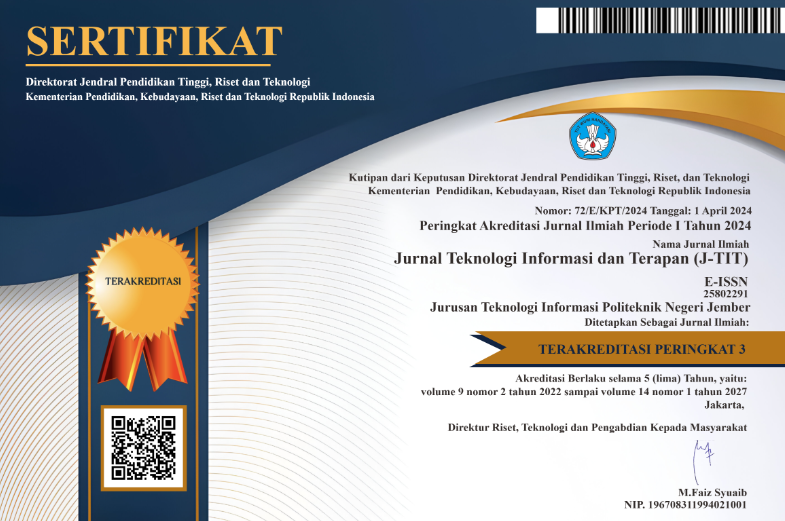PENGELOMPOKAN KEJADIAN GEMPA BUMI MENGGUNAKAN FUZZY C-MEANS CLUSTERING
Abstract
The Indonesian region has a high level of earthquake vulnerability when compared to other countries. This is because Indonesia's position is at the confluence of three large tectonic plates namely the Eurasian plate, the Indo-Australian plate, and the Pacific plate. The high level of earthquake susceptibility is evidenced by significant earthquake data from 2005 to 2009, which recorded 26 significant earthquakes over a period of 4.8 to 8.6 on the Richter scale. The earthquake also caused impacts including casualties, injuries, damage to houses and destruction of houses.
The earthquake event grouping system is a system that functions to classify earthquake events based on two main parameters, namely earthquake strength parameters and earthquake impact parameters. The two parameters are grouped separately, so that the grouping process produces two kinds of grouping results. The stages of this system start from preprocessing data to eliminate noise, then take grouping parameters from the user in the form of the number of clusters, minimum error values, and the maximum iteration limit. Grouping is done using fuzzy c-means method. The grouping results are then displayed in table form and in the form of coordinates in Google Maps.
The grouping of earthquake events has been tested by comparing the results of grouping systems with the results of manual grouping. Testing is done by inputting a number of different maximum iterations. Based on the test results it was found that the greater the maximum iteration value will affect the accuracy of grouping.
The Authors submitting a manuscript do so on the understanding that if accepted for publication, copyright of the article shall be assigned to Jurnal Teknologi Informasi dan Terapan (J-TIT) and Department of Information Technology, Politeknik Negeri Jember as publisher of the journal. Copyright encompasses rights to reproduce and deliver the article in all form and media, including reprints, photographs, microfilms, and any other similar reproductions, as well as translations. Authors should sign a copyright transfer agreement when they have approved the final proofs sent by Jurnal Teknologi Informasi dan Terapan (J-TIT) prior to the publication. The copyright transfer agreement can be download here .
Jurnal Teknologi Informasi dan Terapan (J-TIT) and Department of Information Technology, Politeknik Negeri Jember and the Editors make every effort to ensure that no wrong or misleading data, opinions or statements be published in the journal. In any way, the contents of the articles and advertisements published in Jurnal Teknologi Informasi dan Terapan (J-TIT) are the sole responsibility of their respective authors and advertisers.
Users of this website will be licensed to use materials from this website following the Creative Commons Attribution 4.0 International License. No fees charged. Please use the materials accordingly.

This work is licensed under a Creative Commons Attribution-Share A like 4.0 International License
You are free to:
- Share — copy and redistribute the material in any medium or format
- Adapt — remix, transform, and build upon the material for any purpose, even commercially.
- The licensor cannot revoke these freedoms as long as you follow the license terms.









